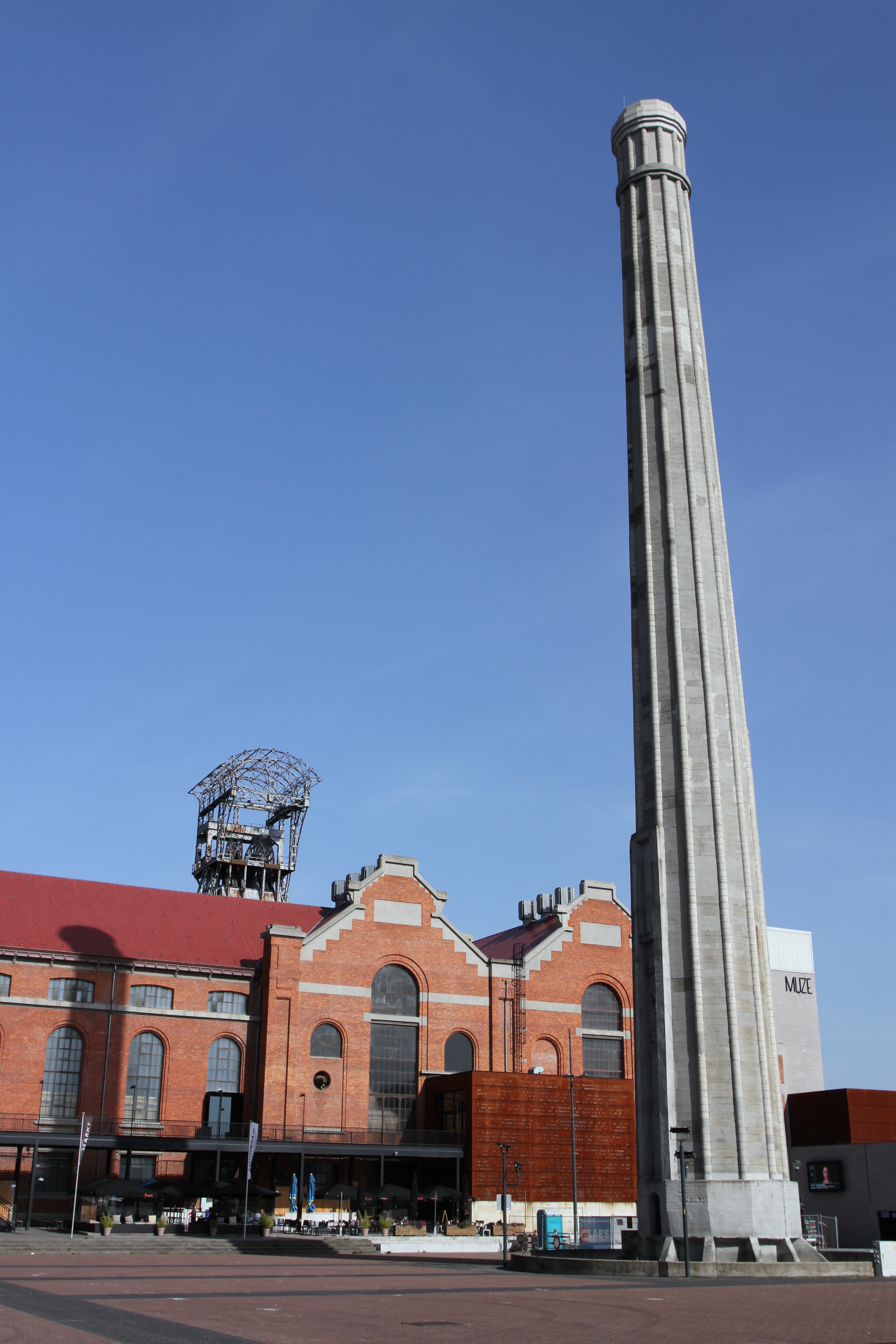The Flemish region of Limburg has done wonders to encourage cyclists and walkers, creating routes that link its once proud industrial past with glorious forests, heaths and rolling farmland. Along the way there are plenty of other sights to discover, from cycle routes that take you through lakes and treetops, to wonderful, and just a little weird, sculptures and artworks. After visiting some of these last year, I’ve been back in the saddle to discover more.
Arriving in the spiritual home of jenever (Belgian gin), Hasselt, my goal was to explore northwards to the former coal mining sites of Heusden-Zolder and Beringen. Amongst slag heaps in the Valley of the Zwarte Beek or Black Brook, sits the largest industrial heritage site in Flanders, Be-Mine. The tell tale signs of mining – slag heaps and the iron headframes that once winched men and machines below ground – can be spotted from far away.






Coal mining in Belgium began in the mid-19th century in Wallonia and kick-started the industrial revolution. Limburg’s vast coal deposits were only discovered in the late 19th and early 20th centuries, but soon became the backbone of the region’s economy. The industry transformed once quiet Flemish farming communities into multicultural melting pots as thousands of workers came from Europe, Turkey and Morocco to dig for coal.
At their peak, the Flemish mines produced around 10 million tonnes of coal each year and employed up to 60,000 workers. It was a short-lived industry though, and by the 1960s and 70s the mines began to close down. Only the Heusden-Zolder mine clung on, closing in 1992. The boom to bust cycle left a lasting mark on both the landscape and on the people. Transforming the mines into heritage sites has been positive for both.
Leaving Hasselt, I cycled along the Albert Canal which was built in part to transport coal from the region. I soon found myself passing through a far more rural landscape and into an entirely different era as I arrived at Herkenrode Abbey. Founded in 1217, it became the first Cistercian convent for women. It flourished throughout the medieval period until almost 600 years of religious life came to an abrupt end during the French Revolution.
In late 1796 the nuns were evicted and the abbey, its treasures and lands were sold off. The Abbey’s magnificent stained glass windows found their way to England and now have pride of place in Lichfield Cathedral. Despite the abbey church burning down in 1826, the site still feels special and since 1998 it has been run as a heritage site by Herita, the Flemish National Trust.
Back on the canal I soon found myself passing through Beringen and the all too familiar signs of mining began to appear. The Be-Mine is a fascinating place to walk around but also a little surreal. The modern development of the site with shops, sports complex and restaurants seems at odds with the sometimes tragic history of the site, but at least it is being put to good use.
Cycling through pleasant woodlands brought me to Terril Heusden-Zolder, the slag heaps of the second mining site. This has also been preserved. You can still see the mine shaft headframe, the air pump building that supplied air to the miners underground, and an electricity plant that powered the whole mine. Both Be-Mine and Heusden-Zolder have museums, sadly I didn’t have time on this visit.






The route back to Hasselt took me through De Wijers Nature Reserve. Known as the ‘land of 1001 ponds’, it’s an important place that is home to rare plants and animals, including the endangered European Tree Frog. It’s a very pleasant landscape with lots of cycle and walking routes weaving through the ponds, many of which were excavated to develop a fishing industry that supported Herkenrode Abbey.
I was soon back on the canal and cycling into the centre of Hasselt. It had been a long and hot day, I found a nice bar looking out over the small Groenplein to the town hall and had a cold beer before hopping on the train back to Brussels.












